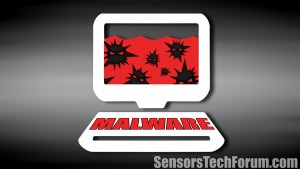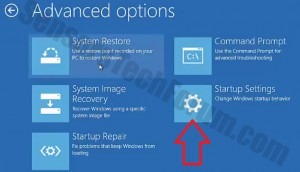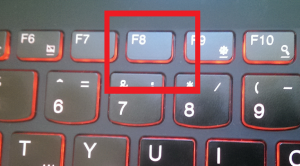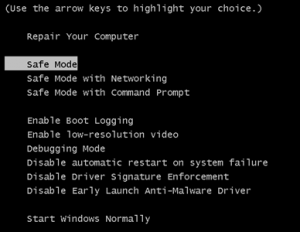| Name | TrojanClicker:MSIL/FaceLiker |
| Type | Browser Hijacker |
| Short Description | The page may look like a regular search engine with links to well-known pages. |
| Symptoms | The user may have the website set as his homepage without his approval. |
| Distribution Method | Bundling. |
| Detection Tool | Download Malware Removal Tool, to See If Your System Has Been Affected by malware |
 FaceLiker is a type of Trojan that is specifically designed to remain undetected in the infected PC for longer periods of time with one and only purpose – generating profit to its owner. It has several variants all of which are made to execute connections from the infected machine to other sites. This is usually done with the purpose of generating profits for different sites, increasing the traffic to those and hence the profit. It can also be used to attack other sites’ funds visiting from referral links that generate profit.
FaceLiker is a type of Trojan that is specifically designed to remain undetected in the infected PC for longer periods of time with one and only purpose – generating profit to its owner. It has several variants all of which are made to execute connections from the infected machine to other sites. This is usually done with the purpose of generating profits for different sites, increasing the traffic to those and hence the profit. It can also be used to attack other sites’ funds visiting from referral links that generate profit.
TrojanClicker:MSIL/FaceLiker – How Did I Get Infected?
Most clicker Trojans are usually distributed via Spam mail campaigns. Such emails may contain one or more documents with the following file formats in them:
→.bat, .cmd, .exe, .pif, .scr, or .zip
Most spam mails may look extremely legitimate and may even be spoofed. This means that the e-mail message may be set to resemble or be the same as someone in your contact list or from some legitimate site that you may have registration in. These can be eBay, PayPal and others. The attachments may contain the trojan horse in them.
Another method of distribution of this vile threat is by social media. We are talking about sites such as Facebook, Twitter, Google+, LinkedIn and others. The malware may be redistributed in the form of a suspicious java or flash update to watch a video posted online that redirects to third-party sites.
TrojanClicker:MSIL/FaceLiker – More About It
According to Microsoft security researchers, once executed in a victim’s computer, the Trojan creates the following objects:
→%LOCALAPPDATA%\tempscreen.exe
\screenshot.lnk
The malware also may execute malicious script, known in the underground as cryptor that will mask its presence from any antivirus programs that are not scanning for it. More to it than that it also contains programmed scripts that execute connection to certain pre-set websites. Users even report seeing this FaceLiker variants to like random Facebook posts on users’ behalf.
More to it than that, the malware may modify certain registry settings in HKEY_LOCAL_MACHINE, HKEY_CURRENT_USER, HKEY_CLASSES_ROOT. Such settings may vary, but are mostly connected with enabling the malware to operate undetected and run on start-up. This trojan may be dangerous for the user for several different reasons:
- It may also steal information from the user, such as credentials, passwords, etc.
- It may open certain sites that are malicious and may infect the PC with other malware.
- The trojan may be combined in a pack with other functions such as downloader, ransomware file encryptor, rootkit, keylogger and others.
Experts advise that if you observe one of the following symptoms to immediately check your computer for TrojanClicker:MSIL/FaceLiker:
- Likes, followings in your social networks to other pages without your explicit consent.
- Random browser redirects to web pages you have nothing to do with.
- Active connections with more than the usual and unfamiliar IP Addresses (check with the netstat –n function in Windows Command Prompt)
TrojanClicker:MSIL/FaceLiker – Detection and Removal
In case you are looking for a solution against this threat to your computer, make sure you act fast. For best results you should first isolate the threat by disconnecting from the internet. After this you should follow the step-by-step removal instructions provided for you below. You should also locate and download a reputable anti-malware solution for your computer. Such software will not only detect and remove any objects associated with TrojanClicker:MSIL/FaceLiker, but it also protects your computer from any future intrusions.
Step 1: Start Your PC in Safe Mode to Remove TrojanClicker:MSIL/FaceLiker.
Removing TrojanClicker:MSIL/FaceLiker from Windows XP, Vista, 7 systems:
1. Remove all CDs and DVDs, and then Restart your PC from the “Start” menu.
2. Select one of the two options provided below:
– For PCs with a single operating system: Press “F8” repeatedly after the first boot screen shows up during the restart of your computer. In case the Windows logo appears on the screen, you have to repeat the same task again.
– For PCs with multiple operating systems: Тhe arrow keys will help you select the operating system you prefer to start in Safe Mode. Press “F8” just as described for a single operating system.
3. As the “Advanced Boot Options” screen appears, select the Safe Mode option you want using the arrow keys. As you make your selection, press “Enter“.
4. Log on to your computer using your administrator account
While your computer is in Safe Mode, the words “Safe Mode” will appear in all four corners of your screen.
Removing TrojanClicker:MSIL/FaceLiker from Windows 8, 8.1 and 10 systems:
Substep 1:
Substep 2:
Whilst holding down Shift button, click on Power and then click on Restart.
Substep 3:
After reboot, the aftermentioned menu will appear. From there you should choose Troubleshoot.

Substep 4:
You will see the Troubleshoot menu. From this menu you can choose Advanced Options.

Substep 5:
After the Advanced Options menu appears, click on Startup Settings.

Substep 6:
Substep 7:
A menu will appear upon reboot. You should choose Safe Mode by pressing its corresponding number and the machine will restart and boot into Safe Mode so you can scan for and remove TrojanClicker:MSIL/FaceLiker.
Step 2: Remove TrojanClicker:MSIL/FaceLiker automatically by downloading an advanced anti-malware program.
To clean your computer you should download an updated anti-malware program on a safe PC and then install it on the affected computer in offline mode. After that you should boot into safe mode and scan your computer to remove all TrojanClicker:MSIL/FaceLiker associated objects.
Preparation before removing TrojanClicker:MSIL/FaceLiker.
Before starting the actual removal process, we recommend that you do the following preparation steps.
- Make sure you have these instructions always open and in front of your eyes.
- Do a backup of all of your files, even if they could be damaged. You should back up your data with a cloud backup solution and insure your files against any type of loss, even from the most severe threats.
- Be patient as this could take a while.
- Scan for Malware
- Fix Registries
- Remove Virus Files
Step 1: Scan for TrojanClicker:MSIL/FaceLiker with SpyHunter Anti-Malware Tool



Step 2: Clean any registries, created by TrojanClicker:MSIL/FaceLiker on your computer.
The usually targeted registries of Windows machines are the following:
- HKEY_LOCAL_MACHINE\Software\Microsoft\Windows\CurrentVersion\Run
- HKEY_CURRENT_USER\Software\Microsoft\Windows\CurrentVersion\Run
- HKEY_LOCAL_MACHINE\Software\Microsoft\Windows\CurrentVersion\RunOnce
- HKEY_CURRENT_USER\Software\Microsoft\Windows\CurrentVersion\RunOnce
You can access them by opening the Windows registry editor and deleting any values, created by TrojanClicker:MSIL/FaceLiker there. This can happen by following the steps underneath:


 Tip: To find a virus-created value, you can right-click on it and click "Modify" to see which file it is set to run. If this is the virus file location, remove the value.
Tip: To find a virus-created value, you can right-click on it and click "Modify" to see which file it is set to run. If this is the virus file location, remove the value.Step 3: Find virus files created by TrojanClicker:MSIL/FaceLiker on your PC.
1.For Windows 8, 8.1 and 10.
For Newer Windows Operating Systems
1: On your keyboard press + R and write explorer.exe in the Run text box and then click on the Ok button.

2: Click on your PC from the quick access bar. This is usually an icon with a monitor and its name is either “My Computer”, “My PC” or “This PC” or whatever you have named it.

3: Navigate to the search box in the top-right of your PC's screen and type “fileextension:” and after which type the file extension. If you are looking for malicious executables, an example may be "fileextension:exe". After doing that, leave a space and type the file name you believe the malware has created. Here is how it may appear if your file has been found:

N.B. We recommend to wait for the green loading bar in the navigation box to fill up in case the PC is looking for the file and hasn't found it yet.
2.For Windows XP, Vista, and 7.
For Older Windows Operating Systems
In older Windows OS's the conventional approach should be the effective one:
1: Click on the Start Menu icon (usually on your bottom-left) and then choose the Search preference.

2: After the search window appears, choose More Advanced Options from the search assistant box. Another way is by clicking on All Files and Folders.

3: After that type the name of the file you are looking for and click on the Search button. This might take some time after which results will appear. If you have found the malicious file, you may copy or open its location by right-clicking on it.
Now you should be able to discover any file on Windows as long as it is on your hard drive and is not concealed via special software.
TrojanClicker:MSIL/FaceLiker FAQ
What Does TrojanClicker:MSIL/FaceLiker Trojan Do?
The TrojanClicker:MSIL/FaceLiker Trojan is a malicious computer program designed to disrupt, damage, or gain unauthorized access to a computer system. It can be used to steal sensitive data, gain control over a system, or launch other malicious activities.
Can Trojans Steal Passwords?
Yes, Trojans, like TrojanClicker:MSIL/FaceLiker, can steal passwords. These malicious programs are designed to gain access to a user's computer, spy on victims and steal sensitive information such as banking details and passwords.
Can TrojanClicker:MSIL/FaceLiker Trojan Hide Itself?
Yes, it can. A Trojan can use various techniques to mask itself, including rootkits, encryption, and obfuscation, to hide from security scanners and evade detection.
Can a Trojan be Removed by Factory Reset?
Yes, a Trojan can be removed by factory resetting your device. This is because it will restore the device to its original state, eliminating any malicious software that may have been installed. Bear in mind that there are more sophisticated Trojans that leave backdoors and reinfect even after a factory reset.
Can TrojanClicker:MSIL/FaceLiker Trojan Infect WiFi?
Yes, it is possible for a Trojan to infect WiFi networks. When a user connects to the infected network, the Trojan can spread to other connected devices and can access sensitive information on the network.
Can Trojans Be Deleted?
Yes, Trojans can be deleted. This is typically done by running a powerful anti-virus or anti-malware program that is designed to detect and remove malicious files. In some cases, manual deletion of the Trojan may also be necessary.
Can Trojans Steal Files?
Yes, Trojans can steal files if they are installed on a computer. This is done by allowing the malware author or user to gain access to the computer and then steal the files stored on it.
Which Anti-Malware Can Remove Trojans?
Anti-malware programs such as SpyHunter are capable of scanning for and removing Trojans from your computer. It is important to keep your anti-malware up to date and regularly scan your system for any malicious software.
Can Trojans Infect USB?
Yes, Trojans can infect USB devices. USB Trojans typically spread through malicious files downloaded from the internet or shared via email, allowing the hacker to gain access to a user's confidential data.
About the TrojanClicker:MSIL/FaceLiker Research
The content we publish on SensorsTechForum.com, this TrojanClicker:MSIL/FaceLiker how-to removal guide included, is the outcome of extensive research, hard work and our team’s devotion to help you remove the specific trojan problem.
How did we conduct the research on TrojanClicker:MSIL/FaceLiker?
Please note that our research is based on an independent investigation. We are in contact with independent security researchers, thanks to which we receive daily updates on the latest malware definitions, including the various types of trojans (backdoor, downloader, infostealer, ransom, etc.)
Furthermore, the research behind the TrojanClicker:MSIL/FaceLiker threat is backed with VirusTotal.
To better understand the threat posed by trojans, please refer to the following articles which provide knowledgeable details.






